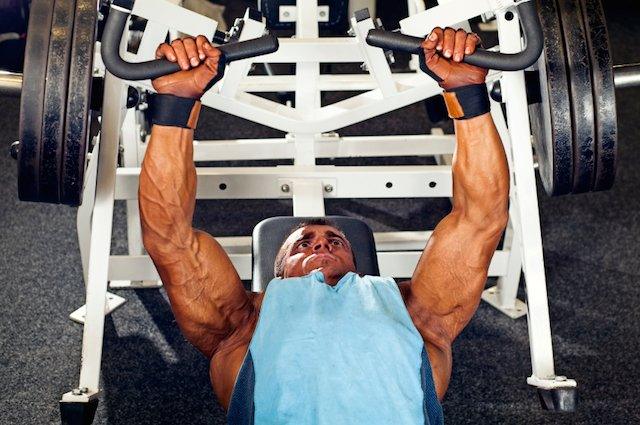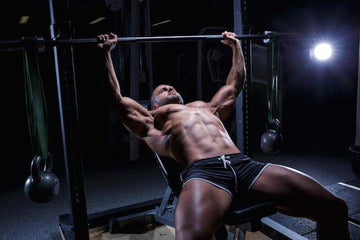

Smith, Barbell, or Dumbbell Bench Press: Which Causes More Muscle Damage?
Table of Contents
Smith, Barbell, or Dumbbell Chest Press: Which Causes More Muscle Damage?
By: Robbie Durand
If you go to any gym on a Monday, its National Chest Day and just about every bench press and hammer strength machine are being used. One of the best ways to make continuous workout progress and add exercise variety is to change the exercise mode by altering body posture, number of muscles utilized (single- or multi-joint exercises), grip, range of motion, or type of device with different stability requirements (i.e., free -weights, machines, elastic bands, etc.).
In general, any free weight exercise will result in greater muscle activation than a smith machine or hammer machine. For example, one study found that lifters were able to use more weight in the squat when using a Smith machine compared to free weights; however, muscle activation was much less in the legs using the Smith machine. How many guys do you know that can load up the leg press, yet have a surprisingly weak barbell squat.
Muscular force production in a dumbbell chest press has been shown to be 17% less when compared to a barbell, whereas muscle activation was higher with dumbbells. So you have to use less weight, but the dumbbell results in greater muscle activation. These results indicate that levels of physiological stress and mechanical strain may be different between free weights and machines for the same muscle group.
Researchers investigated the time course of 96 hours of muscle recovery after three different chest- press exercises with various stability requirements in resistance-trained men. Twenty-seven men were randomly assigned to one of three groups:
1) Smith machine bench press;
2) barbell bench press; or
3) dumbbell bench press.

Participants performed eight sets of 10 repetition maximum with 2 min rest between sets. Muscle thickness, peak torque, and soreness were measured pre, post, 24, 48, 72 and 96 hours following exercise. At the end of the study, the two free-weight modes (barbell vs. dumbbell), recovered from triceps muscle soreness by 72 h post-exercise, while the dumbbell group did not present any triceps brachii muscle soreness after exercise. The barbell group took up to 96 hours to recover, whereas the Smith machine and dumbbell groups took 72 hours. In conclusion, resistance- trained men experience similar muscle damage recovery following Smith machine, barbell, and dumbbell chest-press exercise. However, muscle soreness of the triceps takes a longer time to recover after using a barbell chest-press exercise. The results of the current study suggests that similar muscle damage recovery following Smith machine, barbell or dumbbell chest press resistance exercise in trained men. However, they might not be able to perform strength training at their maximal intensity until 72 h after 10RM dumbbell or Smith machine and 96 h after barbell bench press.
Key Points: All three exercise caused the same amount of muscle damage, but the barbell bench press requires a longer amount of recovery following exercise. Dumbbell and smith machine press was recuperated by 72 hours but barbell bench press required 96 hours of recuperation.
Ferreira DV, Ferreira-Júnior JB, Soares SR, Cadore EL, Izquierdo M, Brown LE, Bottaro M. Chest Press Exercises With Different Stability Requirements Result In Similar Muscle Damage Recovery In Resistance Trained Men. J Strength Cond Res. 2016 Apr 19.
Saeterbakken AH, van den Tillaar R, and Fimland MS. A comparison of muscle activity and 1-RM strength of three chest-press exercises with different stability requirements. J Sports Sci 29: 533-538, 2011
Cotterman ML, Darby LA, and Skelly WA. Comparison of muscle force production using the Smith machine and free weights for bench press and squat exercises. J Strength Cond Res 19: 169-176, 2005.
Schwanbeck S, Chilibeck PD, and Binsted G. A comparison of free weight squat to Smith machine squat using electromyography. J Strength Cond Res 23: 2588-2591, 2009.
Tillaar RV and Saeterbakken A. The sticking region in three chest-press exercises with increasing degrees of freedom. J Strength Cond Res 26: 2962-2969, 2012.
MUSCLE MEDIA MAGAZINE FOR MEN
The premier source of training, nutrition, supplements, fat loss and health for men.

















